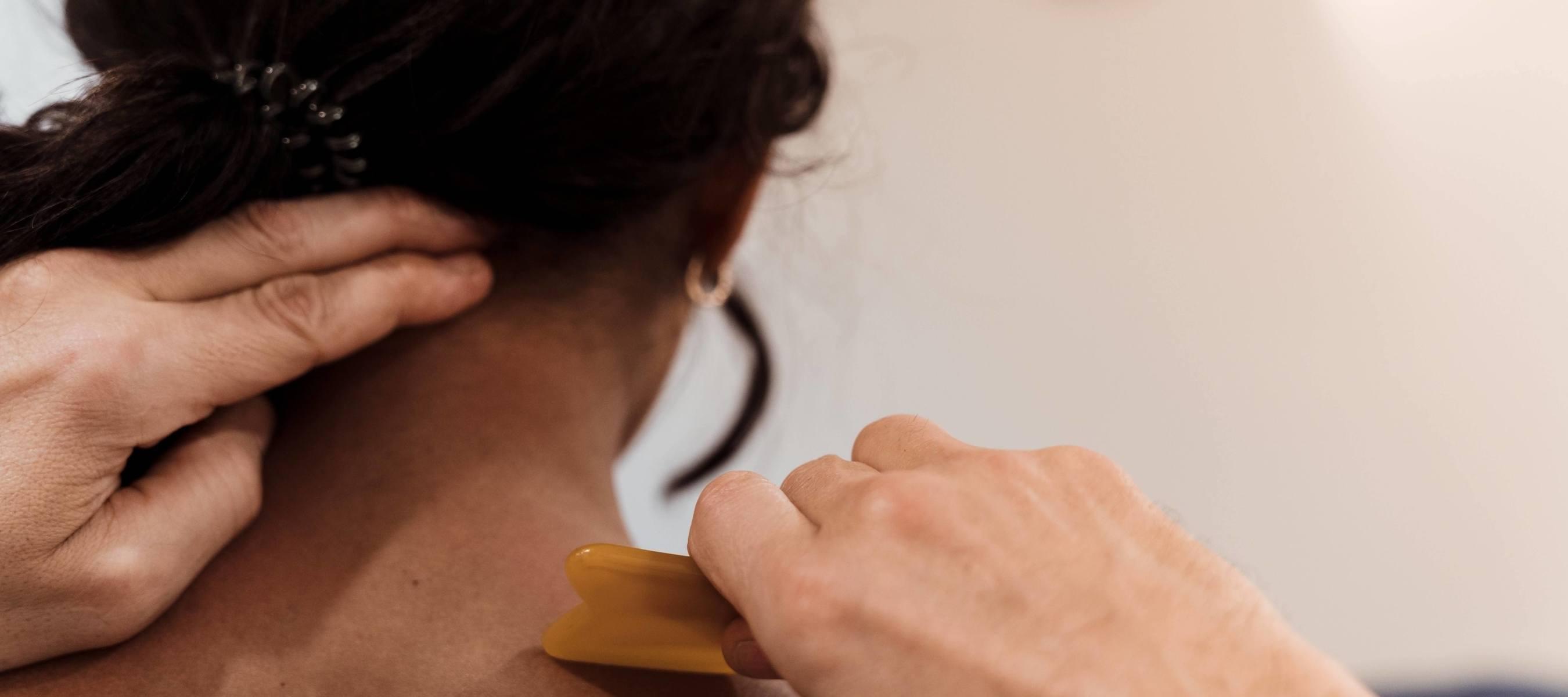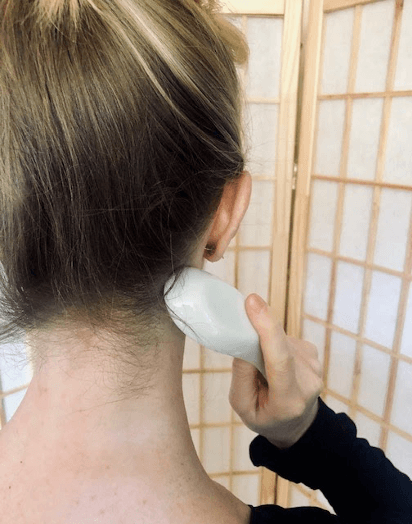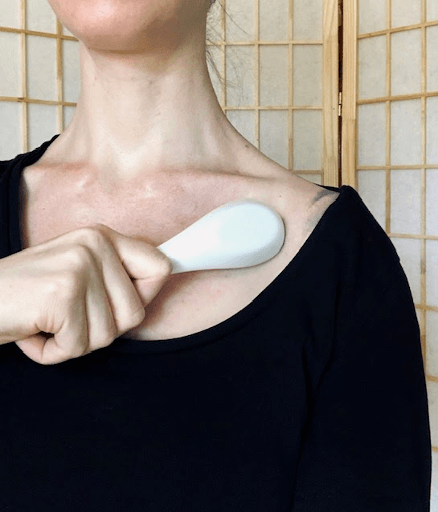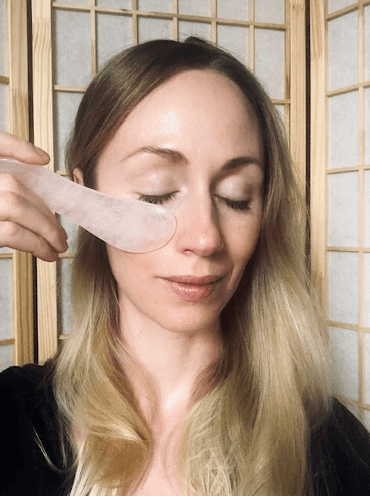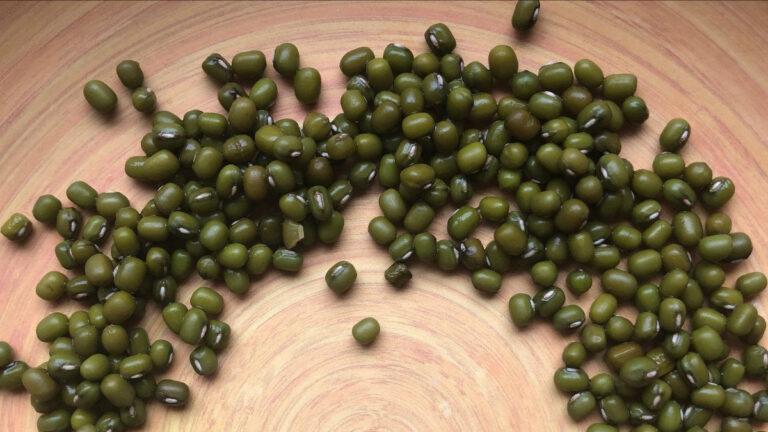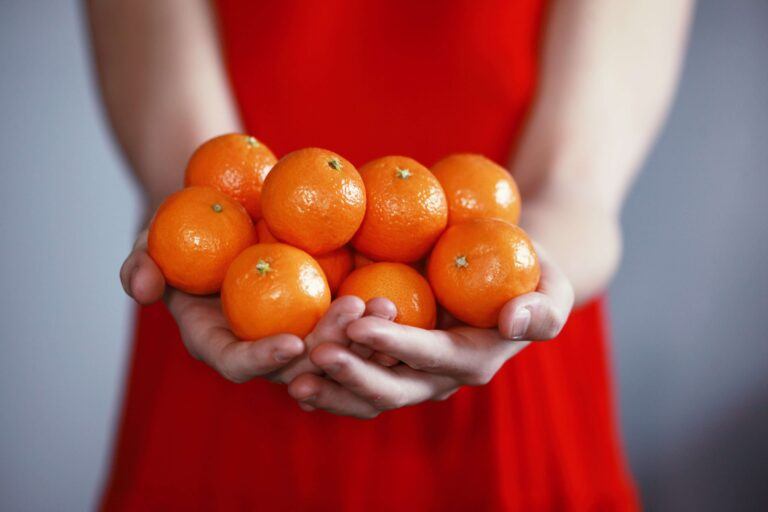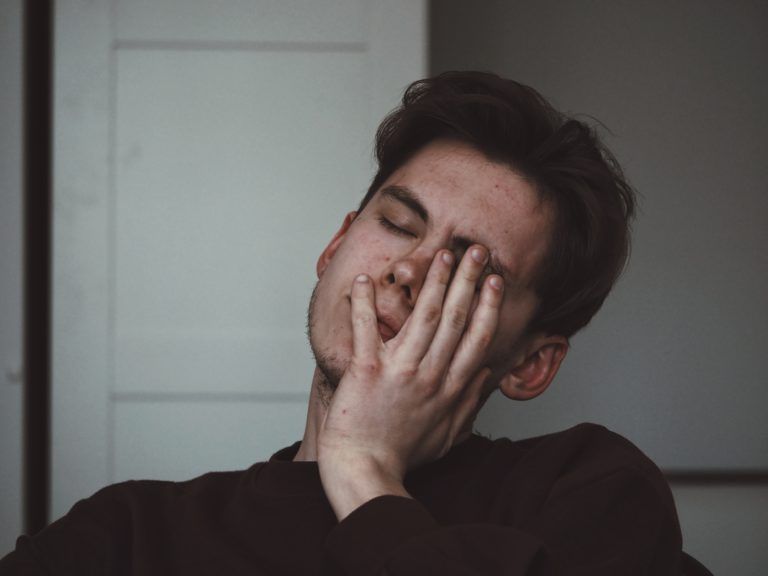In Chinese medicine, gua sha is an ancient technique that can be used to relieve acute or chronic musculoskeletal pain, improve circulation and reduce inflammation, support the immune system and address upper respiratory illnesses, and release tension in areas where there is restricted movement. It can even be used for beautifying techniques like de-puffing and lifting skin. Western sports medicine therapists have adopted gua sha with their own scraping version, called the Graston Technique.
The Tools
We use a smooth, hand-held tool to press and stroke on skin lubricated with oil, almost like a “scraping” technique. These tools are commonly flat stones or a roller, usually made from jade or other semi-precious stones like rose quartz. Jade is considered a Yin stone for its cooling nature to alleviate inflammation. You can also use a rounded ceramic soup spoon or a metal baby jar cap with a thick lip.
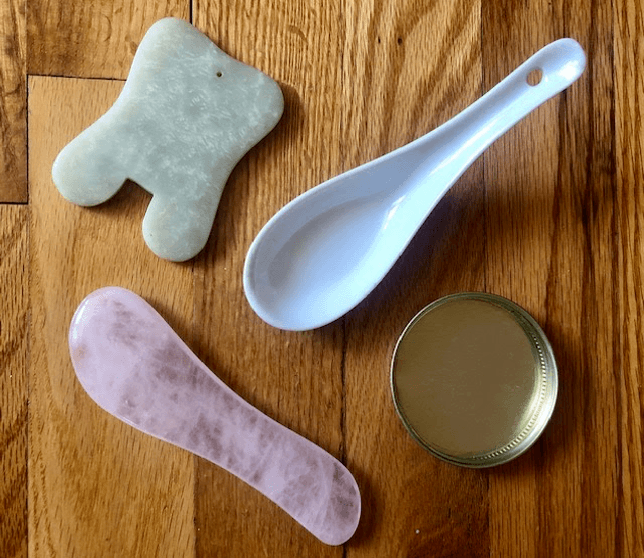
How & Why
Gua means “to rub” and sha refers to the reddened marks indicating where blood stagnation or heat is trapped in the body. The quality, color, and location of the sha are part of our Chinese pattern diagnosis. Gua sha is done in one direction and in even strokes to create the sha that is raised from repeated scraping. These marks represent superficial broken capillaries, which promote an anti-inflammatory and immune response to improve circulation. Here is a video from our IGTV which shows gua sha being performed by Yinova practitioner, Dara Barr.
*Before performing gua sha on yourself, we recommend meeting with one of our practitioners to receive guidance and see if this technique will be beneficial for you.
Helpful tips for using gua sha for particular conditions
For musculoskeletal pain
- Especially helpful for stiff necks, shoulder pain, back pain
- Palpate the local area to feel for any muscle tightness, achiness, or knots.
- Lubricate the area with a massage oil or muscle-relief balm. If you don’t have access to either, you can also use an oil like olive, coconut, or avocado.
- Press and scrape in one direction with even strokes until the sha appears.
- Stay on flesh and muscle, do not scrape over the spine or boney areas.
For respiratory illnesses
- Especially helpful for common colds with achy upper body, fever, or coughs
- Focus on the upper back between the spine and shoulder blades. Use an aromatic oil or balm on the skin. Again, if you are at home and using your own oil, you can consider adding some fresh ginger to your oil.
For coughs
Gua sha the upper and outer chest over the pec muscles, located just below the outer end of the collarbones and in front of the shoulders. (This is exemplified in the aforementioned IGTV video.)
Facial Gua Sha
Facial gua sha has become a popular beautifying technique to naturally stimulate blood circulation and lymphatic drainage for tired or congested skin. It can be used for lifting and sculpting, relaxing tight muscles that contribute to fine lines (like brows furrows), and for de-puffing under-eyes and cheeks. It’s also helpful for jaw tension, seasonal allergies, and sinus congestion. When performing facial gua sha, make sure you use much less pressure on the face – no sha should arise. The most popular gua sha tools for the face are a jade roller or rose quartz stone. Here is some general advice for facial gua sha:
- Moisten the skin with a gentle facial oil, like rosehips.
- With gentle pressure, move in upward lifting motions from the center of the face and out towards the hairline.
- Stop and lightly press the tool in the hairline in front of and behind the ears to stimulate lymphatic drainage. Also follow the jawline and sides of the neck, where there are more drainage sites.
- Do not roll over moles and avoid acne
For under eyes
- Use the small end of the jade roller to roll very gently under the eyes and up towards the temples. Or, simply hold a flat stone under the eyes and allow the coolness to firm and depuff.
For sinus relief
- Follow the natural curve of the cheekbone, moving the tool from the side of the nose and up towards the hairline. Also roll over the brow bone, moving from inner to outer brow.
Self-Care After Gua Sha
Although the marks may look intense, they will fade after a few days. Gua sha is not painful and patients quickly feel relief with decreased tension and increased mobility. Until then:
- Keep the area covered to protect from cold weather, wind, sunlight, and water.
- get plenty of rest
- Drink plenty of water and avoid alcohol.
- Do not shower immediately after.
- Avoid exercise and sweating.
- Clean your tool after each use with soap and water, do not share your tool with others.
If you would like to explore Gua Sha further, head to our store to get your own stone and/or roller!
